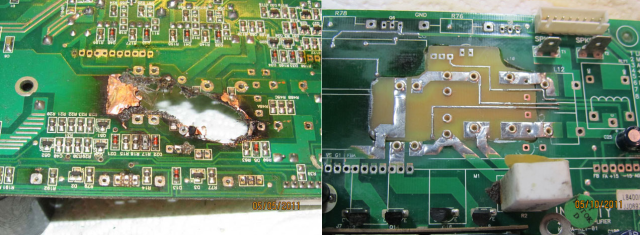The Fort Wayne (Indiana) Hamfest has always had a place in my heart. My first time in Fort Wayne was in 1989, just a few months before I passed my novice license test at the age of 14. My elmer Bob Kehr KA9MDP took me to that swap, I think it was a couple of months after he took me to my first hamfest in LaPorte, Indiana. After the LaPorte swap, which was held at a fairground, the Fort Wayne Hamfest was like going to a professional trade show — it was (and still is) held at the Allen County War Memorial Coliseum, which is a very nice, clean, well lit facility. I can’t remember if it was a one-day or a two-day swap, my memory is telling me that it was Saturday only but that may have been because we only went on Saturday. Also, I’m relying on my memory here again, I believe that it was only held in the EXPO1-2-3 hall. At some time in the future it got too large and for some time the Hamfest also used the EXPO-4 room (I think that’s the room under the ice rink/basketball arena, I’m not sure). Sometime in the last 5-8 years the Hamfest has shrunk back into EXPO1-2-3.
Last weekend (November 15 and 16) was somewhat of a disappointment that started at the beginning when I bought my ticket and walked to the EXPO rooms. Instead of buying the ticket in the rotunda and walking straight into EXPO-3, I had to walk all the way down the hall to the side entrance to EXPO-1. I discovered why as soon as I walked in. EXPO-3 had been partitioned off. This had the initial effect of making the place seem more crowded, as they had stuffed the Hamfest into a smaller space. I think I know why they did this, over the past few times I have visited the Hamfest, it had some wide open spaces where tables had been in the past. So this had the effect of mitigating the negative effects of seeing open space.
The physically smaller event could be blamed on the smaller number of vendors and dealers. Attendance seemed kind of bleak this year as well, and some of that could be blamed on the smaller number of vendors which could in turn be blamed on the smaller number of people, ad nauseum.
The first thing that people bring up when someone complains about a dying hamfest is the “eBay excuse.” People don’t wait to go to a hamfest to buy something when they can get it almost instantly on eBay or from a commercial online vendor like AES or Ham Radio Outlet or the countless other vendors online. I have never accepted the “eBay excuse” because there are more reasons to go to a hamfest than just to buy stuff. Read more


